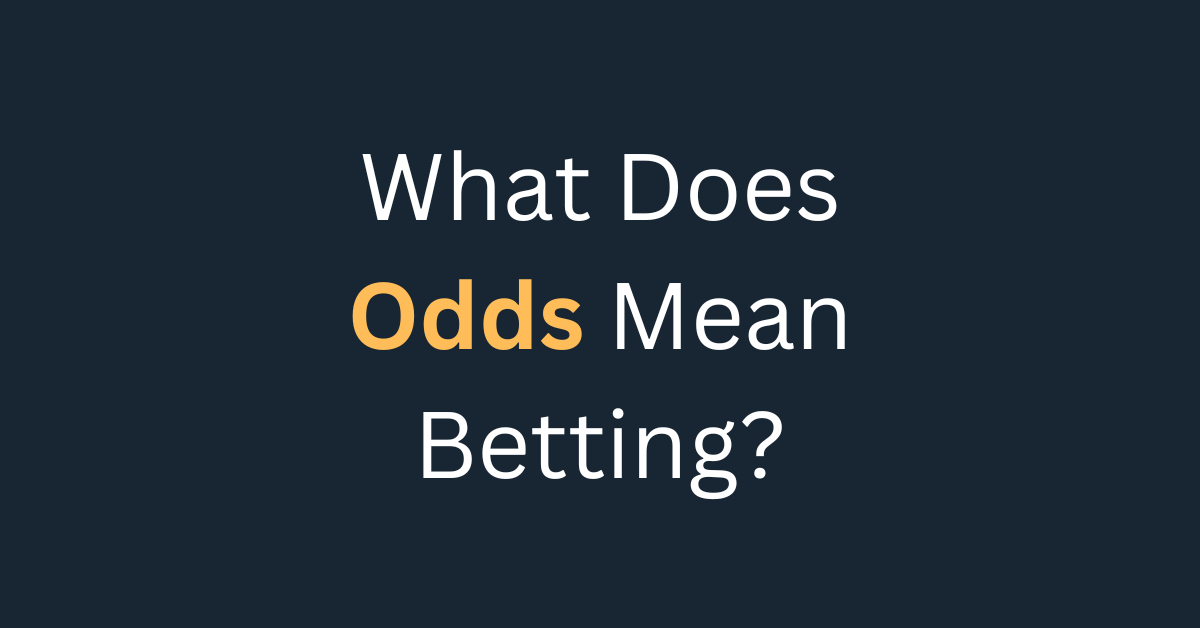Understanding Betting Odds
Betting odds are numerical representations of the likelihood of a certain outcome in a betting event, such as sports or elections. These odds can help bettors understand the potential returns they might receive if their chosen outcome occurs. The odds are usually displayed in different formats, including decimal, fractional, and moneyline, depending on the betting market.
Understanding betting odds is crucial for making informed betting decisions. By knowing how to interpret odds, bettors can assess the level of risk involved in a bet and determine whether the potential payout is worth it. Whether you’re a seasoned bettor or a beginner, having a good grasp of betting odds is fundamental to navigating the world of betting effectively.
Different Types of Odds
When it comes to betting, there are various types of odds that represent the probability of an outcome. Decimal odds are commonly used in Europe and Australia, where the odds are displayed as a decimal number. For example, an odd of 2.50 means that for every unit wagered, you will receive 2.50 units in return if your bet is successful.
Another type of odds is fractional odds, which are popular in the UK. In fractional odds, the odds are represented as a fraction, such as 5/1 or 3/2. The first number in the fraction indicates the potential profit, while the second number represents the amount wagered. For instance, in odds of 5/1, if you bet 1 unit and win, you will receive 5 units in return, including your initial stake.
Decimal Odds Explained
Decimal odds are commonly used in many parts of the world, including Europe, Canada, and Australia. They are simple and straightforward, making them popular among bettors. Decimal odds represent the amount you will receive in return for every unit wagered, including your stake. For example, if the decimal odds are 3.00, you would receive $3 for every $1 wagered, including your original stake. Decimal odds are easy to calculate potential winnings, as you simply multiply your stake by the decimal odds.
One of the advantages of decimal odds is that they already include your stake in the calculation, so you don’t have to do any additional math to determine your potential winnings. When using decimal odds, the number displayed is the total amount that will be returned to you if your bet is successful, including your original stake. This makes it convenient for bettors to quickly assess how much they stand to win without needing to calculate the odds separately.
Fractional Odds Explained
Fractional odds are a common way to represent betting odds in the UK and Ireland. They are shown as fractions, with the first number representing the potential profit and the second number representing the stake. For example, if the odds are 5/1, it means that for every 1 unit you bet, you could win 5 units in profit plus your stake back.
It is important to note that fractional odds can be either “odds-on” or “odds-against.” Odds-on means that the amount you would win is less than your stake, while odds-against means that the amount you would win is more than your stake. For instance, if the odds are 1/2, it means you would win half of your stake in profit, plus your stake back, making it an odds-on bet.
Moneyline Odds Explained
When it comes to sports betting, moneyline odds are a popular way for bettors to wager on the outcome of a game or event. Moneyline odds are straightforward and easy to understand, making them a great option for beginners in the world of sports betting. Essentially, moneyline odds show the amount of money you need to bet in order to win $100 if you bet on the favorite, or how much you would win if you bet $100 on the underdog.
For example, if you see a moneyline of -150 next to a team, it means you would need to bet $150 on that team to win $100. On the other hand, if you see a moneyline of +200, it means that if you bet $100 on that team and they win, you would receive $200 in winnings. Moneyline odds can be positive or negative, indicating whether a team is favored to win or considered the underdog in a competition. This simplicity is one of the reasons why many bettors prefer moneyline odds for their wagers.















